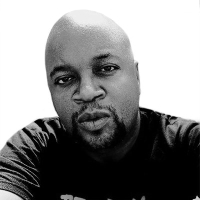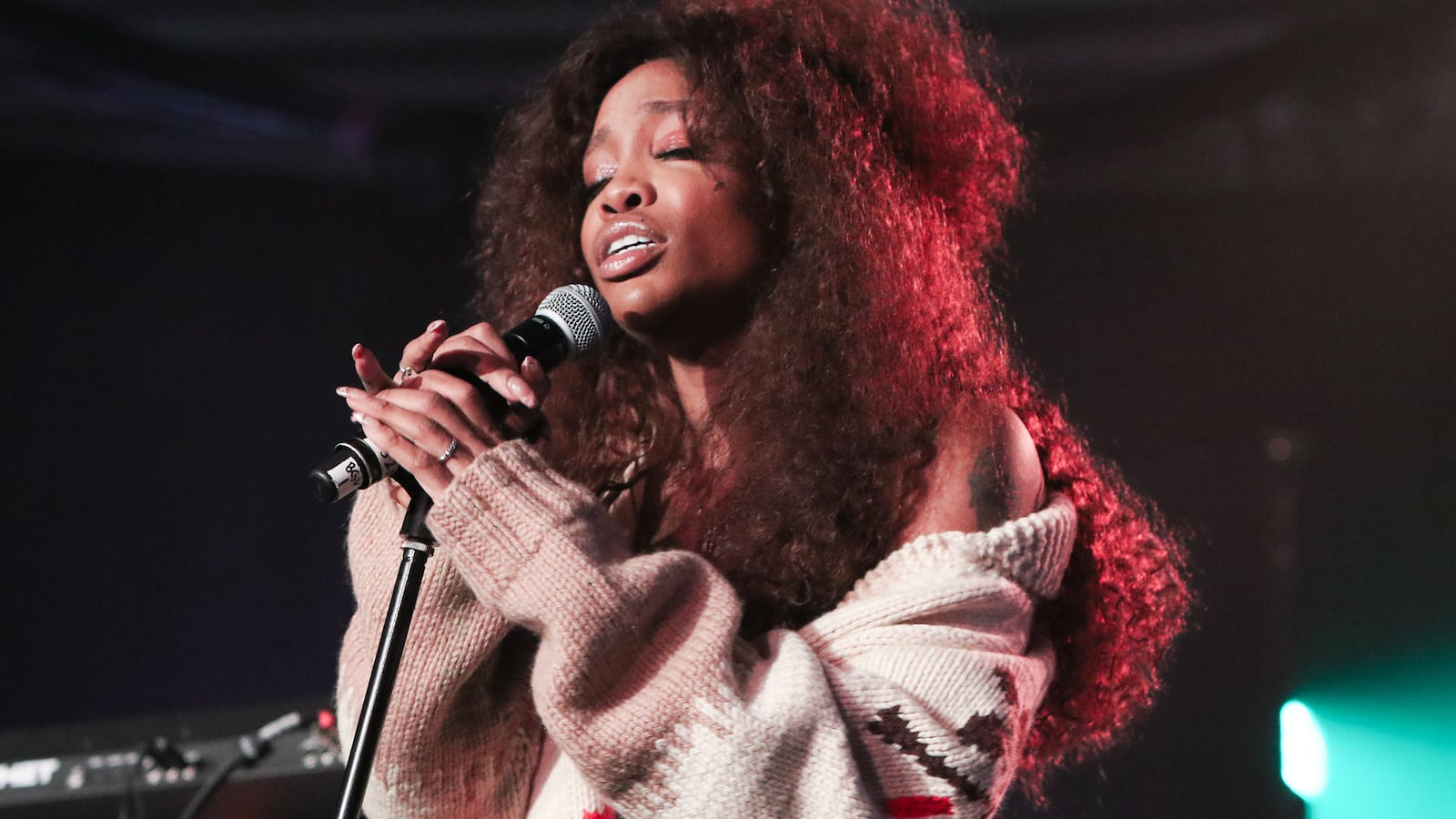In American music, the singer-songwriter has carried the torch for the sincerest form of musical expression since the days of 19th century folk music. With the rise of recorded sound in the 20th century came blues songs that evolved out of personal experiences and expression—even as the songs became standards that were reworked over time by the bevy of artists who would record them.
For much of the 2010s, the charts have been dominated by pop stars who weren’t necessarily delivering the most personalized, introspective music. Big productions and a litany of guest appearances on every release undermined the impact of singer-songwriters, as artists like Jazmine Sullivan and Bilal remained on the fringes of the mainstream. But this year, the pendulum swung for sincerity. Black singer-songwriters once again are redefining popular music and reshaping contemporary soul.
And it couldn’t come at a better time.
As a generation has come into its own, mobilizing against racism, misogyny and the various oppressive factors that have shaped the national conversation of late, the music reflected that same generational ascendance. Albums like SZA’s CTRL, Khalid’s American Teen and Kelela’s Take Me Apart redefined what modern R&B and soul music sounded like, and reawakened the singer-songwriter in urban music—building on momentum that began with 2016 albums like Childish Gambino’s Awaken, My Love! and Solange’s A Seat At the Table. The shift of 2016 was not an anomaly: this is black music re-centering its most personalized artists in a way that echoes the singer-songwriters of yesteryear.
One of the great tragic figures of ‘60s music, Otis Redding had been the shining star of Stax Records. Redding’s emergence coincided with that Memphis-based record label becoming a soul institution, and Redding’s songwriting had been a catalyst for this success. His first single was the self-penned “These Arms of Mine” in 1962, and it would become a top ten hit and Redding’s first gold-seller. Over the next five years—alongside hit covers like “Try A Little Tenderness”—Redding’s compositions like “Mr. Pitiful,” “I’ve Been Loving You Too Long,” “Respect,” “I Can’t Turn You Loose” and the No. 1 “(Sittin’ On) The Dock of the Bay” would cement his reputation as a star and hitmaker. These songs were not only significant for Redding, but they would resonate for others: “Respect” would become a monster hit for Aretha Franklin, The Rolling Stones would perform “I Can’t Turn You Loose” in concert, and “Hard to Handle” would later be a 1990 hit for The Black Crowes.
Aretha Franklin’s rise in the late 1960s has been well-documented by historians and fans. Having struggled for years to get her career off the ground while signed to Columbia Records, she hit pay dirt after a move to Atlantic and teaming with the musicians at the legendary Muscle Shoals studios in Alabama. While many of Aretha’s breakout hits were covers or penned by others, four songs on her breakout album (1967’s I Never Loved a Man the Way I Love You) were written or co-written by Aretha, and over the next several years, Aretha-penned hits like “Think,” “Call Me,” “Spirit In the Dark,” “Rock Steady” and “Day Dreaming.” In Aretha’s emergence as a songwriter was the presentation of romance and sex from the perspective of a black woman—one who also happened to have one of the greatest voices of all time, and thus, could communicate the intensity of those emotions beautifully. But the glory of Franklin’s voice got the lion’s share of the praise—despite her obvious gifts as a writer, arranger and producer.
By the 1970s, however, black singer-songwriters were beginning to get their due. In the wake of Sam Cooke’s death in 1964, The Impressions had assumed the mantle of socially-aware soul music that Cooke’s “A Change Is Gonna Come” had announced. Curtis Mayfield’s writing in The Impressions had come to define the era via songs like “People Get Ready” and “Keep On Pushin’,” but in 1970, he broke out on his own with his first solo album Curtis.
Mayfield’s perspective on black life was even sharper in his solo music: odes to black brotherhood (“Beautiful Brother of Mine”) examinations of racial conflict (“If There’s a Hell Below, We’re All Going to Go),” salutes to black women (“Miss Black America”) and black people as a whole (“We The People Who Are Darker Than Blue”) affirmed that Mayfield was the most deliberate and sincere black songwriter on the charts consistently. In speaking directly to black perspectives, Mayfield became a cultural voice as the Black Power movement dawned.
At Motown, the Hitsville era had come to a close; artists like Marvin Gaye and Stevie Wonder had fought the label for the right to write and record music as they saw fit. Marvin’s What’s Going On had announced this new era in grand fashion: a concept album about the Vietnam War, poverty and environmental issues, it became a transcendent moment for Gaye and for Motown. It also emboldened Stevie Wonder.
Stevie would go on one of the greatest album runs of all time: 1973’s Innervisions, 1974’s Fulfillingness’ First Finale, and 1976’s Songs In the Key of Life were all commercial and critical smashes. At a time when Bob Dylan was inconsistent, John Lennon was incoherent, and Bruce Springsteen was only beginning to come into his own, Stevie Wonder was the gold standard for what a popular singer-songwriter could achieve.
The classic era of soul music was typified by singer-songwriters who gave voice to black experiences: artists like Donny Hathaway, Bobby Womack, and the aforementioned Wonder, Gaye, Minnie Riperton and others. Many of these artists were widely recognized for their talents, but as the disco era dawned and a sharp divide emerged between black artists and the white music press, a new generation of black singer-songwriters would fail to generate the kind of acclaim their predecessors had enjoyed.
R&B in the post-disco age was often marginalized by mainstream radio and early video platforms like MTV, and rock critics who’d fawned over Stevie Wonder and Marvin Gaye were less celebratory of the slicker R&B acts who emerged in the early 1980s. In Luther Vandross, for example, there was a singular singer-songwriter and producer—he’d written and produced the vast majority of his platinum-selling debut Never Too Much and it’s follow-up Forever, for Always, for Love. Luther had earned acclaim, but not the kind of across-the-board adulation that the previous generation of soul stars had enjoyed. Often, Vandross was revered for his immaculate singing; his other talents reduced to peripheral in light of his amazing voice. This was despite the fact that Luther also wrote and produced hits for Aretha Franklin and co-wrote songs with David Bowie.
Michael Jackson and Prince both penned some of the decade’s most indelible tunes, from “Billie Jean” to “Purple Rain.” Of the two, Prince’s reputation as a singer-songwriter-arranger was a major part of his image. His early albums all famously featured the descriptor “Produced, arranged, composed, and performed by Prince” in the liner notes, and the wunderkind from Minneapolis was marketed by his label Warner Bros. as the Stevie Wonder of the Reagan era.
With Michael Jackson, his talents as a songwriter and producer were somewhat less acknowledged. The Jacksons left Motown back in 1975, and one of the main reasons they’d departed the iconic label was creative control. The Jacksons wanted to write their own music, which they would finally do successfully with 1978’s Destiny. Michael’s songwriting came to the fore on 1979’s smash Off the Wall album, which featured three of his own compositions, including the Grammy Award-winning No. 1 hit “Don't Stop Til You Get Enough.” Jackson also wrote the No. 1 hits “Beat It,” “Billie Jean” and the top five hit “Wanna Be Startin’ Somethin’” from his 1982 mega-seller Thriller.
Jackson’s songwriting seemed to be disregarded by those who felt the success of Off the Wall and Thriller were attributable to the genius of legendary producer Quincy Jones. But Jackson wrote hits in The Jacksons and he wrote hits for other artists, including Diana Ross (1982’s “Muscles”) and his sister Rebbie Jackson (1984’s “Centipede”)—both of which were produced by Jackson.
The neo-soul movement of the 1990s was the biggest boon for black singer-songwriters since the 1970s. Performers like Erykah Badu and D’Angelo looked back to classic soul aesthetics while filtering the approach through a hip-hop sensibility, and it gave a new generation a template to follow. It is this particular period that seems to be most influential on what’s happening now: eclectic black artists delivering highly-personal music through their own idiosyncratic lens.
But never have black singer-songwriters been this centered.
This generation of singer-songwriters is challenging our perceptions of love and sex, freedom and art. Whether or not one agrees with the “alternative R&B” tag, there’s no denying that there has been a significant shift as compared to what type of artists were dominating urban radio a decade ago. Frank Ocean’s Channel Orange deserves a lot of the credit: the success of that album set the stage for black singer-songwriters to return to prominence. Instead of attempting to channel the group-centric ‘90s R&B of acts like Jodeci and TLC, these artists were more like modern Mayfields. And after a slow build, they have become the standard-bearers for their peers. With rock’s diminished cultural presence, artists like SZA, Ocean, Khalid and others are the singer-songwriters who are shaping the sound and voice of the times.
At the 2018 Grammys, Awaken, My Love! is up for Album of the Year, while Khalid and SZA are both nominated for Best New Artist and Best Urban Contemporary Album—alongside The Weeknd. Singer-songwriters Daniel Caesar and PJ Morton are up for Best R&B album. With the current cultural climate, these artists have become immensely important in reshaping a pop narrative that has often centered white singer-songwriters as the pinnacle of the artform. This voice is unapologetically black and it’s undeniably at the forefront of music right now. These are era-defining artists. These are the standard-bearers and they aren’t pushed to the margins for white rockers or earnest folkies—they are leading the charge.
R&B has been marginalized for the better part of a generation, but with the omnipresence of Beyoncé’s Lemonade last year, it has reasserted itself and become the dominant genre for personalized art. Just a couple of years after the mainstream world virtually ignored classic releases like Jazmine Sullivan’s Reality Show and Ego Death by The Internet, SZA and Khalid are among the most celebrated artists in music. The key is to not allow this resurgence to get reduced to a fad or trend, only to be supplanted in a few years by hyperkinetic pop stars or indie rockers. This is a movement that has been a long time coming: it should be nurtured and celebrated by those with the platform to champion R&B’s new wave.
Black art has always led the way for popular music, and this current wave of singer-songwriters is no different. Introspective music is all over the charts now and a generation of black artists has clearly found their voice, and re-asserted R&B as a vital, important genre. There’s a long tradition there, and for too long, R&B was marginalized by hip-hop’s cultural centering and rock’s historical cache. But right now, there is no other genre doing more interesting things in the mainstream. We are entering a new golden age of soul music.
Pay attention to where we go from here.






